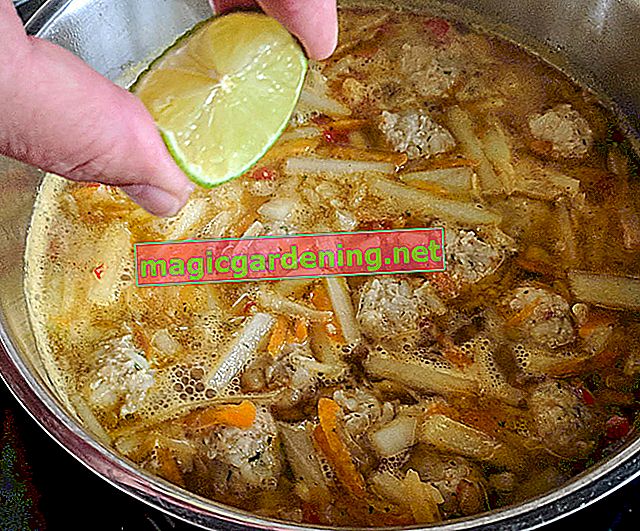
Sowing, soil and location
Since the tubers can reach a diameter of up to 20 cm, space is most important for growing celery. You also need patience, as it can take up to ten months from sowing to harvest.
also read
- Autumn is the harvest time for celeriac
- How to harvest celeriac!
- This is how celery and celeriac are harvested
The pre-cultivation of the seeds takes place from February to April, protected from the wind in the cold frame or in not too warm rooms. Celeriac is a light germ, so cover it only lightly with soil. The economical watering hardens the young plants and makes them more resistant for the transition to the open air.
After the last frost, the preferred plants come into the beds, whereby the crown must remain above the ground. The space requirement of at least 30 cm between the plants and rows must be observed.
Celeriac prefers a soil enriched with manure or compost, which is also permeable and moist. Heavy loamy soil is ideal. The best location is a sheltered place in the sun. A lot of light is important for good development.
Care and fertilization
Maintenance takes some effort. The soil around the young plants should occasionally be loosened for ventilation and weed control. Once the tubers have become clearly visible, the upper roots are exposed. The drying of the exposed roots stimulates the tuber growth. In addition, the soil around the plants must never dry out. The need for water is particularly great in September.
It is fertilized twice during growth. Potash and nitrogen-rich fertilizers are optimal, although nitrogen should be used more sparingly, as it could affect the taste of the tuber. Potash-containing fertilizers help the celery lighter tuber color.
Crop rotation and neighborhood
For the best results, the crop rotation should be followed for four years. If possible, do not combine the celeriac with other umbelliferae, such as carrots or parsley. Your own conspecifics should not be too close in line either. On the other hand, there is beneficial togetherness with tomatoes, cucumbers, cabbage and lettuce.
Harvest and storage
Choosing the right time for harvesting requires a little tact. On the one hand, the tubers get a strong growth spurt in October, on the other hand, the celery should be removed from the ground before the first frost.
Harvest the tubers on a dry day to prevent fungal attack, twist off the leaves and cut off the roots. In mild winters, the celery can stay in the soil if it is well drained. Protect the plants with a suitable cover. The celeriac is then always harvested fresh as required.
Tips & Tricks
The variety “Giant from Prague” is considered tried and tested and reliable. The “Prinz” variety is resistant to leaf diseases and is known for its smooth, round tubers.








